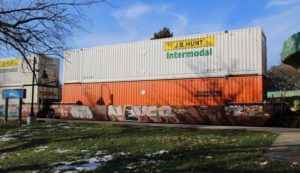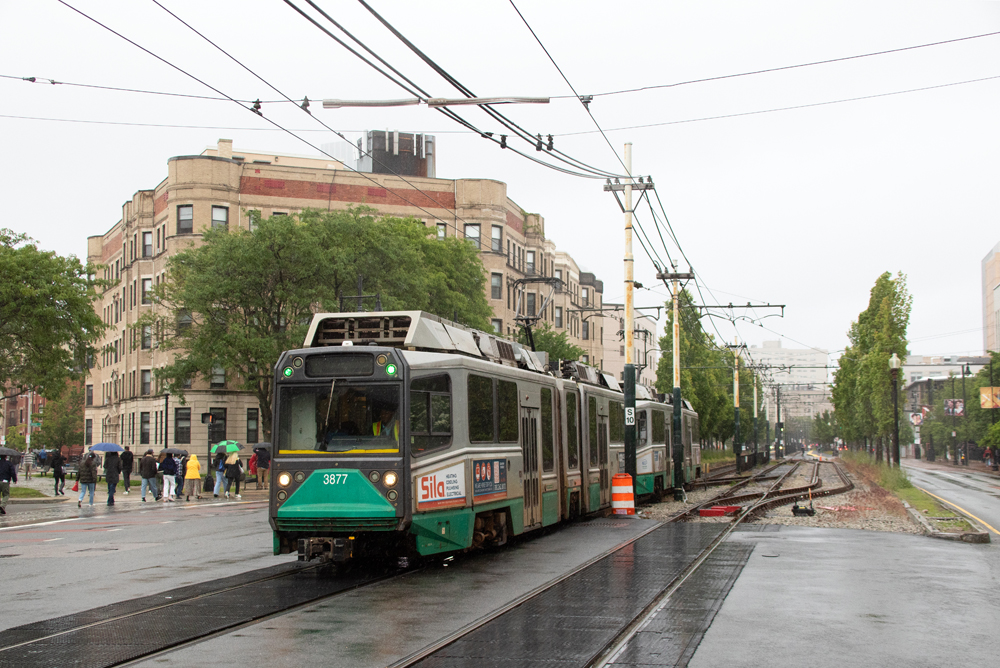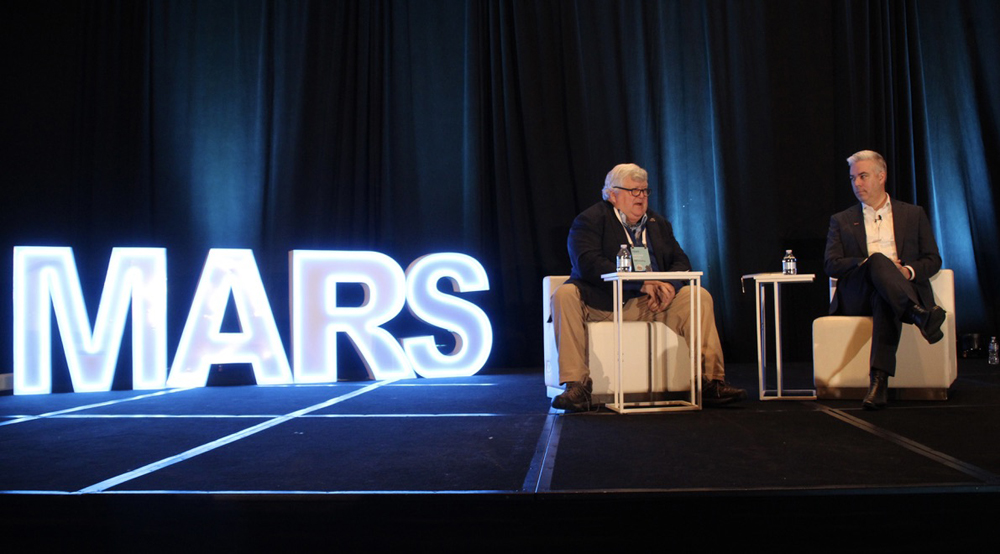
LOWELL, Ark. — J.B. Hunt executives remain confident that intermodal can grow faster than trucking despite current capacity constraints in Southern California amid a wave of imports from Asia.
“We still think there is a huge opportunity in intermodal … It is a significant number of shipments that are moving on the highway that really should convert into intermodal with more fluidity and our ability to really get the network more in motion,” J.B. Hunt Chief Commercial Officer Shelley Simpson said on the company’s earnings call on Monday.
Over the long term, J.B. Hunt believes its intermodal volume can grow to 10 million loads annually, up from about 2 million currently. The company, which has a fleet of 98,700 domestic intermodal containers, has ordered 6,000 new boxes for delivery this year to support its growth plans.
J.B. Hunt’s overall intermodal volume in the fourth quarter was up 1%, driven by a 1% increase in traffic originating on BNSF Railway and flat volume in the East, where Norfolk Southern is Hunt’s largest intermodal partner.
The company said its quarterly intermodal volume was constrained by rail congestion and service issues stemming from elevated demand levels and labor challenges in rail, truck, and customer operations that escalated in December.
Executives said J.B. Hunt was able to honor its commitments to current customers, but that the West Coast congestion prevented the company from grabbing additional volume.
Congestion at BNSF terminals in Southern California prompted J.B. Hunt to divert loads to the railroad’s terminals in Stockton, Calif., and Phoenix. Network imbalances and congestion also constrained the repositioning of empty containers to the West Coast.
“We also recognize that we still have significant cost and velocity challenges in Southern California, and simply adding containers is not the only solution required to grow capacity in that key market. BNSF and J.B. Hunt are working together to find better capacity solutions for our customers,” says Darren Field, president of J.B. Hunt’s intermodal division.
The ports of Los Angeles and Long Beach saw their import volume surge beginning last summer as retailers sought to restock inventory as consumers shifted their spending from services to goods during the pandemic.
The Port of Los Angeles saw its cargo volume rise 50% in the second half of the year, with the port handling 94% more traffic the week before Christmas compared to the same week in 2019. The neighboring Port of Long Beach set an annual volume record in 2020, which included recording its busiest December and fourth quarter ever.
As of Jan. 15 some 32 container ships were anchored offshore awaiting berth space at the ports. Maritime expert Lars Jensen of Copenhagen-based SeaIntelligence Consulting estimates the ships are holding about 290,000 twenty-foot equivalents, the common measure of maritime containers.
Much of that cargo is transloaded into domestic containers before moving to inland points via intermodal. J.B. Hunt executives said they expect retailers will be restocking through midyear, which will push intermodal volumes above normal levels.
Hunt’s fourth quarter intermodal revenue declined 1%, but its operating income tumbled 16% largely due to congestion-related costs.













